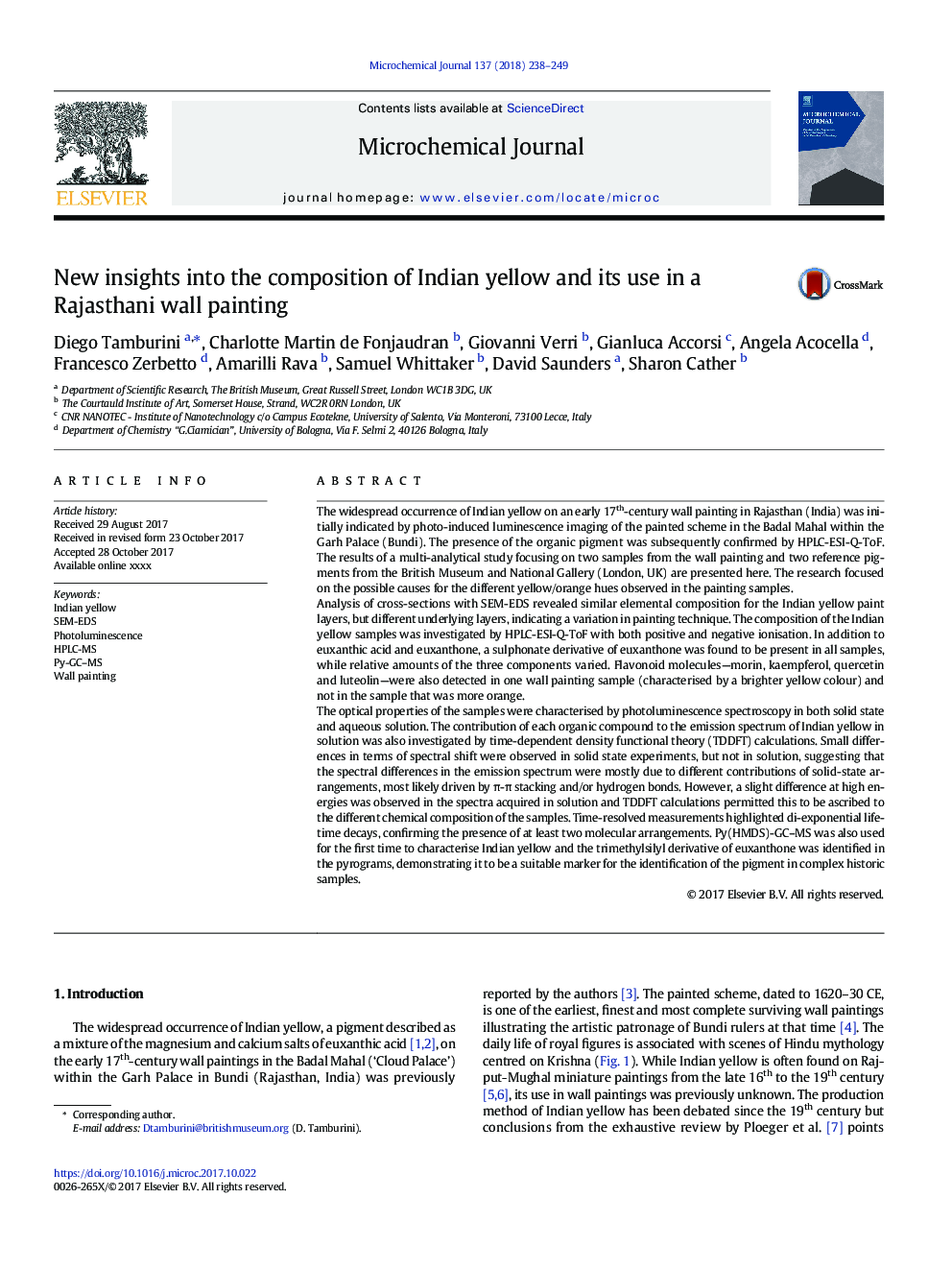| Article ID | Journal | Published Year | Pages | File Type |
|---|---|---|---|---|
| 7640980 | Microchemical Journal | 2018 | 12 Pages |
Abstract
The optical properties of the samples were characterised by photoluminescence spectroscopy in both solid state and aqueous solution. The contribution of each organic compound to the emission spectrum of Indian yellow in solution was also investigated by time-dependent density functional theory (TDDFT) calculations. Small differences in terms of spectral shift were observed in solid state experiments, but not in solution, suggesting that the spectral differences in the emission spectrum were mostly due to different contributions of solid-state arrangements, most likely driven by Ï-Ï stacking and/or hydrogen bonds. However, a slight difference at high energies was observed in the spectra acquired in solution and TDDFT calculations permitted this to be ascribed to the different chemical composition of the samples. Time-resolved measurements highlighted di-exponential lifetime decays, confirming the presence of at least two molecular arrangements. Py(HMDS)-GC-MS was also used for the first time to characterise Indian yellow and the trimethylsilyl derivative of euxanthone was identified in the pyrograms, demonstrating it to be a suitable marker for the identification of the pigment in complex historic samples.
Related Topics
Physical Sciences and Engineering
Chemistry
Analytical Chemistry
Authors
Diego Tamburini, Charlotte Martin de Fonjaudran, Giovanni Verri, Gianluca Accorsi, Angela Acocella, Francesco Zerbetto, Amarilli Rava, Samuel Whittaker, David Saunders, Sharon Cather,
